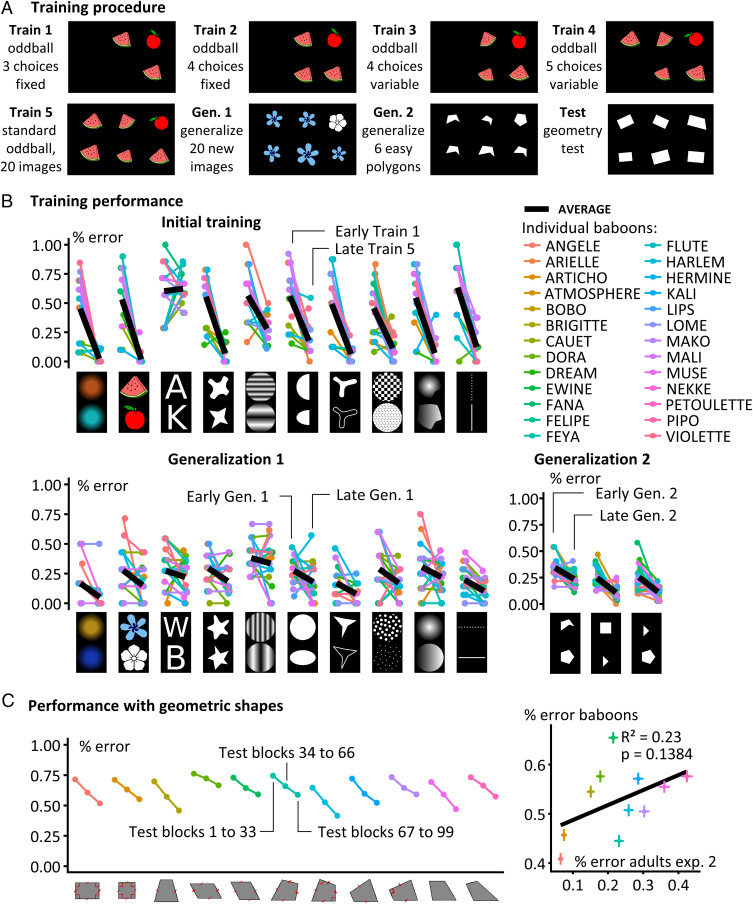Fig. 3.
The geometric regularity effect is absent in baboons. (A) Training procedure. Each animal was trained for thousands of trials on the intruder task, first with a small number of fixed images (three; training stage 1), then with a larger number of images (up to six; training stage 5) and with variations in size and orientation. Mastery of the task was verified through two generalization tests using novel images. Each baboon moved from one stage to the next only when the error rate fell below 20%. (B) Summary of baboon training performance (first and last blocks of 88 trials each). Each color represents one baboon. Most animals attained the criterion on the 10 pairs of shapes used for training (Top) and successfully generalized to 10 new pairs of shapes (Bottom Left) and to three pairs of easily distinguishable polygons (Bottom Right; chance: 83.3% errors with six shapes). (C) performance in the geometric intruder task. (Left) Average performance for each geometric shape at three stages: the first 33 test blocks, the middle 33 test blocks, and the last 33 test blocks. Each block contained 88 trials, and baboons took at most 99 blocks. (Right) correlation between the average error rate in baboons and in French adults taking the same test (experiment 2).

